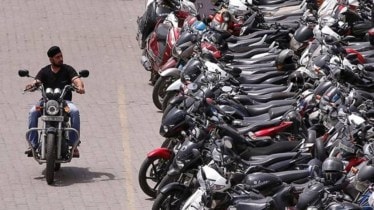Automotive retail sales in India maintain growth momentum. The overall wholesales for August came at 18,18,647 units, which was 9 percent higher YoY, but a moderate 2 percent growth over the previous month.
In terms of segment-wise performance, two-wheeler sales came at 12,54,444 units, an uptick of 6 percent YoY, and a modest growth of 2 percent over the previous month. Importantly, three-wheeler sales saw record monthly sales at 99,907 units, up 66 percent YoY. Passenger vehicle sales came at 3,15,153 units, up 7 percent YoY, while tractor sales came at 73,849 units up 13 percent YoY. Commercial vehicle sales grew by 3 percent YoY at 75,294 units.
Manish Raj Singhania, President, FADA said, “Auto retail in August witnessed a promising 9% YoY growth, maintaining momentum similar to the preceding month. Concurrently, a 3% MoM uptick suggests a reversal in short-term trends. When compared against pre-COVID benchmarks, the auto retail sector indicated a modest 0.8% improvement, led by 2Ws recouping lost ground and mitigating the de-growth by 11%.”
He further states that in the two-wheeler segment, the Indian market displayed a complex yet steady landscape. Despite of positive growth, consumer sentiment remained ambivalent, impacting conversion rates and intensifying competition among key players.
The CV sector revealed a multi-faceted scenario: despite headwinds such as sluggish cargo movement, verticals like cement, iron ore, and coal exhibited robust demand. As the festive season approaches, indicators suggest a market recovery, reinforced by priority supply scheduling and a resurgence in travel-related sales. Aggressive promotional initiatives and enhanced customer sentiment further support this optimistic outlook.
Singhania states that in the passenger vehicle segment, improved vehicle supply, bolstered by expanded customer schemes, has maintained positive market dynamics. Despite such advances, supply chain bottlenecks persist, particularly in timely deliveries. The market has responded favourably to the introduction of new hybrid and CNG models; however, a constrained product range in popular segments, such as mid-size SUVs, continues to limit overall potential.
“It is alarming that inventory levels have exceeded a 60-day supply for the first time, even before the onset of the Navratri-Diwali festivities—a trend that necessitates vigilant monitoring by PV OEMs.”
Rural demand
The auto retail body stats that as the Indian automobile Industry enters September, the outlook remains cautiously optimistic, shaped by a multitude of factors that vary across vehicle segments. The onset of the festive season, beginning with Onam, has uplifted market mood, improved liquidity and eased earlier bottlenecks in the supply chain across all categories.
In the two-wheeler market, while a broader range of models is now available, subdued rural demand due to insufficient rainfall could temper sales growth. For commercial vehicles, although bulk deals and the favourable timing of the construction season in September add to the optimism, the real sales momentum is anticipated to pick up during the Navratri and Deepawali festival following the Shraadh period.
The passenger vehicle market, meanwhile, offers a mixed bag: new product launches and better stock availability are positive signs, but high customer discount expectations and the impact of the Shraadh period may act as small speed breakers.
After a prolonged period of stagnation, rural demand is showing signs of a positive resurgence. However, this recovery remains tenuous, contingent on the performance of the final phase of the monsoon season. Lack of sufficient rainfall could precipitate a rise in inflation, adversely affecting consumer purchasing power and diminishing demand. This meteorological shortfall would not only jeopardise the yield of the ongoing kharif crops but also cast a shadow on the subsequent sowing season for rabi crops. Such developments would be particularly inopportune as they would coincide with the peak of India’s festive season, notably Navratri and Deepawali, traditionally periods of heightened consumer activity.
| CATEGORY | AUG’23 | AUG’22 | YoY % | JULY’23 | MoM % |
| Two-wheeler | 12,54,444 | 11,80,230 | 6.29% | 12,28,139 | 2.14% |
| Three-wheeler | 99,907 | 60,132 | 66.15% | 94,148 | 6.12% |
| E-RICKSHAW(P) | 46,174 | 29,274 | 57.73% | 43,529 | 6.08% |
| E-RICKSHAW WITH CART (G) | 3,095 | 1,446 | 114.04% | 2,773 | 11.61% |
| THREE WHEELER (GOODS) | 9,060 | 6,450 | 40.47% | 9,010 | 0.55% |
| THREE WHEELER (PASSENGER) | 41,482 | 22,907 | 81.09% | 38,761 | 7.02% |
| THREE WHEELER (PERSONAL) | 96 | 55 | 74.55% | 75 | 28.00% |
| Passenger vehicle | 3,15,153 | 2,95,842 | 6.53% | 2,84,064 | 10.94% |
| Tractor | 73,849 | 65,018 | 13.58% | 90,765 | -18.64% |
| Commercial vehicle | 75,294 | 72,940 | 3.23% | 73,065 | 3.05% |
| LCV | 43,929 | 45,403 | -3.25% | 43,236 | 1.60% |
| MCV | 5,895 | 5,119 | 15.16% | 6,182 | -4.64% |
| HCV | 22,137 | 20,713 | 6.87% | 20,581 | 7.56% |
| Others | 3,333 | 1,705 | 95.48% | 3,066 | 8.71% |
| Total | 18,18,647 | 16,74,162 | 8.63% | 17,70,181 | 2.74% |
